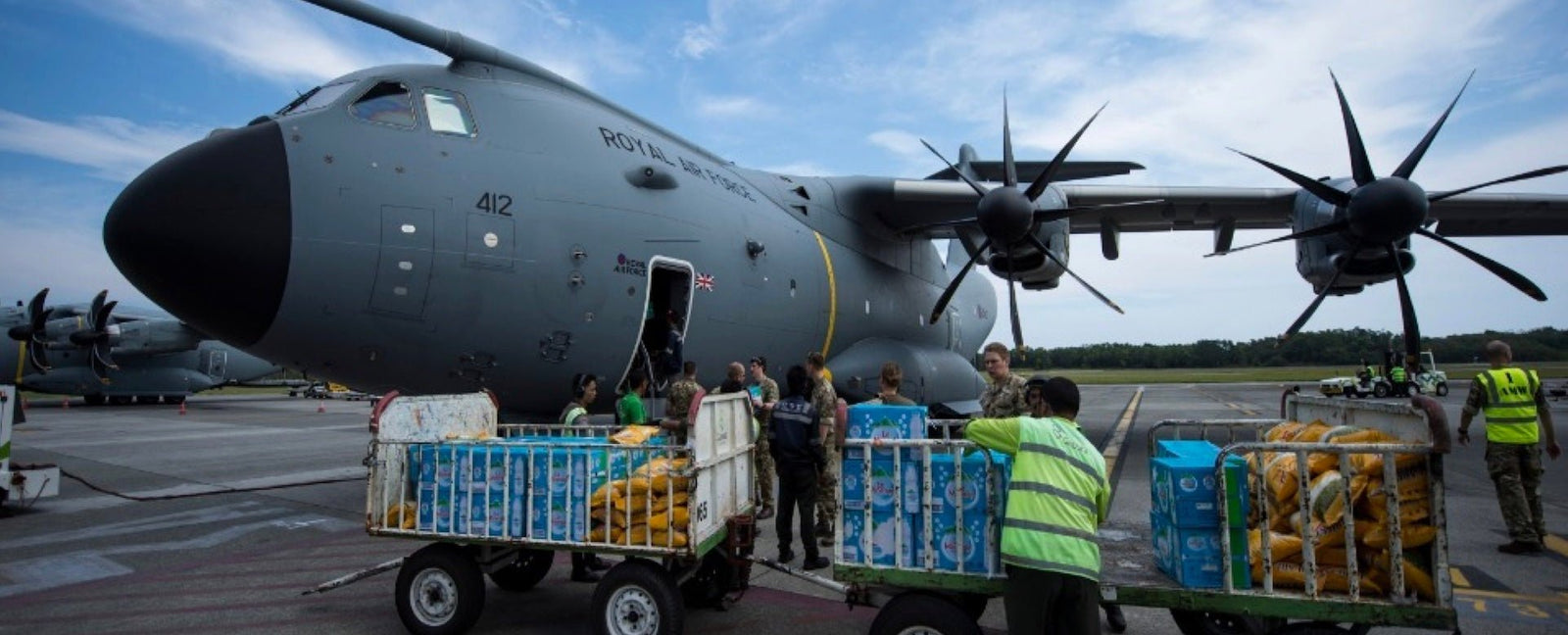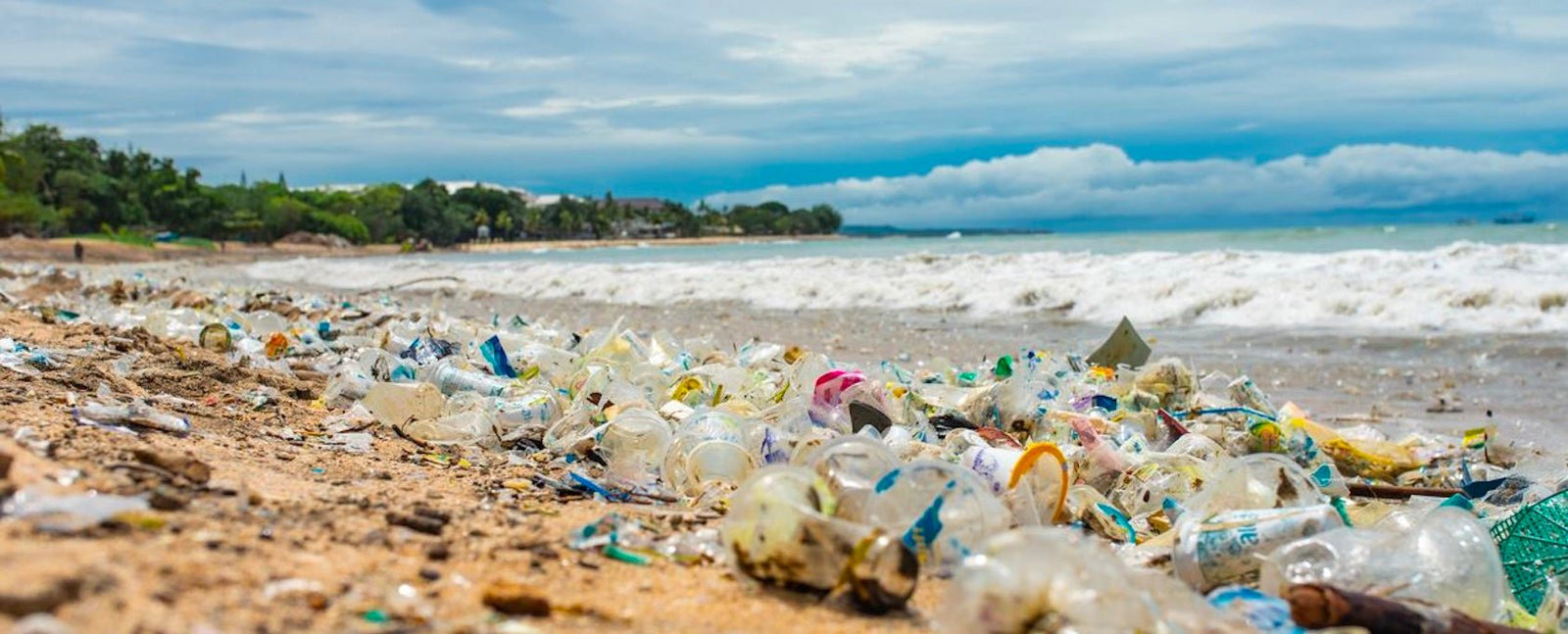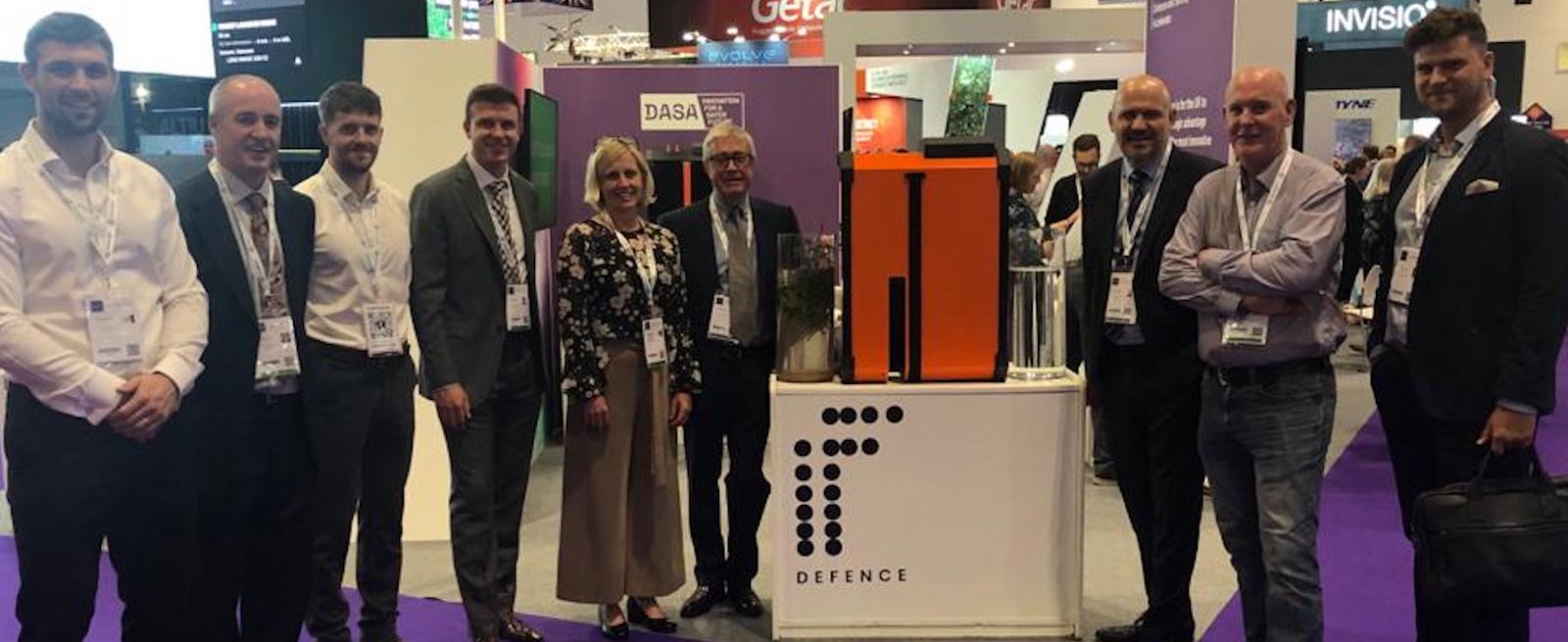
R&D of MVCD™ technology for disaster relief applications
by Duncan Peters August 09, 2021 4 min read
Ministry of Defence
This project was a 11 month feasibility study with the specific objective of technology basic validation in a laboratory environment. This allowed us to demonstrate TRL 4 and take the development process further towards a commercially available product with the military.
The Opportunity
Clean Water Designs (CWD) is an early stage business that has developed a patent pending technology (no. 1815616.6 & 2004347.7) that will convert water from undrinkable sources (rivers, floods, wells, seas or even waste water if needed) into fresh, safe drinking water. The technology, which is modular, rugged and portable will solve a number of problems for people in a whole variety of environmental and economic situations and have particular benefits to the Military for forces serving in remote, isolated or challenging locations. Specifically, it will take water from any source, including sea water, and, using the technology, produce water that is high quality (of laboratory quality purity), safe and enjoyable, with no need for replacement filters or membranes or additives such as chlorine. The technology is scalable and can address specific logistics problems in a military setting such as the risk and cost of transporting and delivering bottled water to troops or crisis zones. The environmental benefits of substituting bottled water on a large scale is also significant.
The Defence sector in the UK and around the world has a very high reliance on water, an issue that this technology could support with a cost effective, high quality solution to mitigate both health and mission risk. TheImplications of Climate Change for the U.S. Army report found that“the US Army is precipitously close to mission failure concerning hydration of the force in contested arid environments”. It went on to state, ”reliance on external sources for water poses a serious threat to Army mobility and capacity”. This project, therefore, addresses a strategic challenge within the Defence sector that has clear benefits for both soldiers on the front line and those supporting their efforts (e.g. logistics, planning and medics) as well as, for example, civilians in crisis zones in which the military are deployed.
It is clear that soldiers rely heavily on water to maintain health and performance, with the logistical need for water in modern conflicts enormous. Military operations in dry climate zones such as Iraq and Afghanistan, for example, require extensive water supplies (https://euro-sd.com/2019/05/articles/13367/water-purification/). Only .0073% of the world's water is fresh and drinkable and pressures on fresh water supplies are increasing as the world's population grows and requires more to survive. This will make accessing fresh water in remote regions even more challenging in the future.
Technological challenge driving the innovation
The innovation being developed within this project will clearly have many potential applications and there are specific challenges that it is seeking to address in order to provide a key resource solution for the military. Specifically, these are:
- Eliminating the risk of water borne disease (common with existing technologies) that can have a significant detrimental effect on the health of personnel and place increasing pressure on medics, as well as affecting the success and effectiveness of missions due to sick or dehydrated operatives. The Management of Acute Diarrhoea Illness during Deployment report in 2018 by an expert panel, states “acute diarrhoea illness during deployment causes significant morbidity and loss of duty days.” And states the number 1 protection strategy is “prevention of food and waterborne disease”.https://www.ncbi.nlm.nih.gov/pmc/articles/PMC5657341/
- Reducing the cost and risks associated with the supply and transportation of water to military personnel in dangerous and challenging locations across the world. An analysis, in 2003, by an Army Material Systems Analysis activity indicated that, in the initial phase of Operation Iraqi Freedom (OIF), 51.1 percent of the tonnage moved to the theatre was accounted for by water and there was on average 1 casualty per 50 supply convoys. During this time the US Army consumed 1.2 million bottles of water per day. Resupply operations were identified as a significant contributor to casualties in operations in Afghanistan and Iraq (https://www.nap.edu/read/18832/chapter/5#33).
Impact for the Defence sector
Successful development and deployment of the technology will have a number of benefits for the Defence sector in addressing these challenges. The technology itself will miniaturise the Vapour Compression Distillation process, providing a fast, energy efficient, pure water supply from previously unusable water sources, including sea water. The key benefits include the following,
- Guaranteed high quality of 0-3TDS (Total Dissolved Solids - A measure of water quality, with the lowest being 0 and 35000 being sea water), water regardless of input quality, including saline, that will meet and exceed the Health Protection Agency Guidelines for Water Quality, all in one system
- Ability to add simple mineral or electrolyte additives to base distilled water to provide healthy mineral water on tap anywhere in the world
- No need to transport purified water from outside the region at high cost (when the cost of water, transport and other logistics are included)
- Reduced dependence on supply routes due to no internal consumables
- No additional infrastructure (pipes, etc.) required
- Low power consumption – the technology consumes400W (4.5 times less than a kettle) and runs off existing power generators or renewable power systems. For example, a portable Rolls-Royce V-TEG 6.5 kW Generator could comfortably power 10 portable units that would create around 4,800 litres per day of clean water; enough to satisfy the basic drinking water needs (3.7 litres/day) of over 1,200 soldiers
- No change in water quality over time as there are no filters that can clog and reduce operational efficiency
- Light weight and modular for easy transportation
All of which demonstrates the impact for the sector in terms of performance, cost and time.
The proposed technology, therefore, has the following key advantages for military use:
- It is a credible alternative to bottled water convoys and offers a more cost-effective solution than existing systems.
- It offers better quality water in one system for the end user, in comparison to currently used combination of purification equipment (e.g. Reverse Osmosis followed by chemical treatment)
- The solution is mobile and robust for use in remote and austere locations; it can be moved by hand, easily stacked and operated with low effort weekly maintenance.
CWD continues to work with DASA to further identify how the technology can be used in different situations, taking part in a Demo Day in Autumn 2021 where various military divisions will be given an opportunity to see the device running and to ask any questions they may have on it’s operation.
Get more out of IF
Join our mailing list to learn more about our innovative technology, be the first in line to experience its benefits, and join a community of people who want better water and better health.




